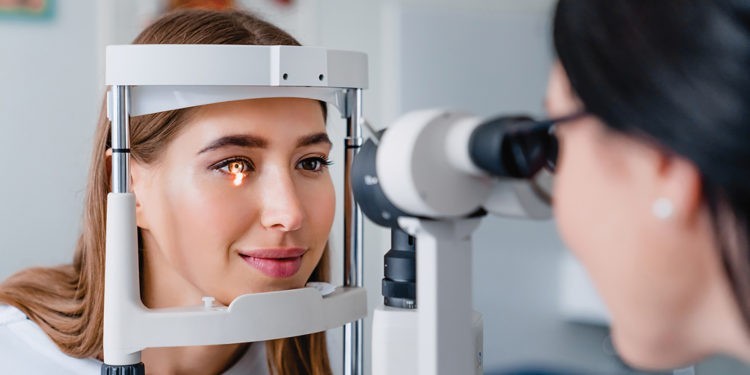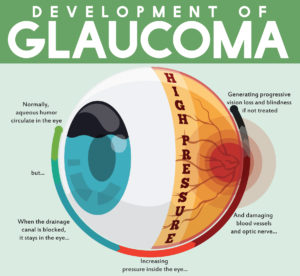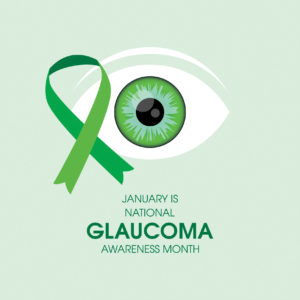Save Your Eyes

Story by Ann E. Butenas
Glaucoma is a leading cause of blindness, and it comes like a thief in the night. Would you know if this irreversible and often symptom-free eye disease has affected you?

Can you imagine having a sight-stealing disease and not even know it? That is how glaucoma operates. By definition, glaucoma is a group of eye conditions that adversely affect the optic nerve. It is usually the result of fluids building up in your eyes and increasing eye pressure. This leads to visual field loss.
According to glaucoma.org, more than three million people in the United States have glaucoma and over 60 million people around the globe suffer from it. With January as Glaucoma Awareness Month, the emphasis is on “speeding the cure and spreading the word” about this sight-stealing disease.
Glaucoma is the main cause of irreversible blindness. It is often referred to as “the sneak thief of sight,” as there are no symptoms initially and they usually start slowly. Once someone loses vision to this disease, it cannot be restored. Although glaucoma primarily affects those who are middle-aged or older, it can attack someone at any age. While there is no cure for this disease, there are medications and surgeries that can slow down its progression or prevent further vision loss. Therefore, early detection is vital to treating and managing this disease.
Although there are many types of glaucoma, the most common form is primary open-angle glaucoma (POAG). This is a lifelong condition and represents about 90% of all glaucoma cases. With POAG, the drainage canals of the eyes become clogged over time. In turn, this can damage the optic nerve.
Another main type of glaucoma is called primary angle-closure glaucoma, also referred to as narrow-angle glaucoma. With this type, most of the areas between the iris and cornea are closed. This reduces fluid drainage and causes increased pressure within the eyes. A medical emergency, this type of glaucoma requires medical attention immediately.
Other types of glaucoma include normal-tension glaucoma, secondary glaucoma, pigmentary glaucoma, congenital glaucoma, exfoliative glaucoma, neovascular glaucoma, uveitic glaucoma, and traumatic glaucoma.

The best way to protect your eyes from glaucoma is to undergo a comprehensive eye examination. That way, if you do have it, it can be detected early, and proper treatment can be initiated.
You may be at risk for glaucoma if you are of African, Asian, or Hispanic descent; if you are over 60 years of age; if other family members have been diagnosed with this disease; and if you are severely nearsighted. Therefore, regular eye exams are encouraged, as these may help prevent unnecessary loss of vision.
If you want to help someone who has glaucoma, you can encourage them to take care of their eye health. Encourage them and let them understand that, if detected in the early stages, glaucoma is more likely to respond to treatment. This can help decrease any anxiety and depression this person might have. You will also have to control your own apprehension about the disease.
Let your loved one know you are there for them and that you are taking a team approach to this matter. Your loved one may feel overwhelmed by all the treatment and medication protocols. Help them with these until they feel more comfortable in doing so. Further, you can create healthy meal plans for them. Studies have shown that foods rich in lutein and zeaxanthin can help mitigate eye damage. Aim for vegetables and fruits that have orange and yellow skins, such as corn, carrots, squash, and any citrus organic products. Also beneficial are leafy green vegetables, such as collard greens and kale.
 As a caregiver for someone who has glaucoma, you can be an integral part of their journey. You can help them follow their doctor’s orders and recommendations, as well as encourage them to take better care of their eyes. The goal is to help their vision and delay any vision loss. Your role as a supportive team player in this regard can affect your loved one’s overall eye health.
As a caregiver for someone who has glaucoma, you can be an integral part of their journey. You can help them follow their doctor’s orders and recommendations, as well as encourage them to take better care of their eyes. The goal is to help their vision and delay any vision loss. Your role as a supportive team player in this regard can affect your loved one’s overall eye health.
Again, while there is no cure for this disease, the Glaucoma Research Foundation, a national non-profit organization, is funding research to find improved treatments and cures. You can raise increased awareness of glaucoma by speaking to family members and others about it. If you have this disease, do not be afraid to let others know of it. You can also get involved within your community by volunteering with fundraisers, online information sessions, and attending group discussions. Don’t be blindsided by this progressive disease. Speak to your eye care provider if you have any questions or concerns. Learn more at glaucoma.org.






